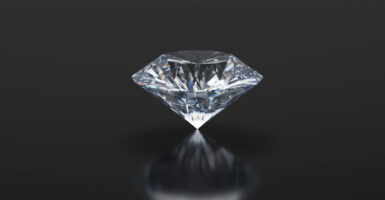Familial Longevity Linked to Low Levels of Vitamin D
This article is more than 2 years old

Remember when you were a kid — assuming you aren’t a kid now — and the world was your playground for all the running, jumping, and tumbling your heart desired? Anything could happen outside. Of course, recent years have bombarded us with warnings about skin cancer risks from staying in the sun too long, and some of the physical proof is dreadful. So we build a few more shelves for specialized suntan lotion, and problem solved, right?
In the latest Canadian Medical Association Journal (CMAJ), a study is presented that may prove the families that live longer are the ones with lower levels of vitamin D, and a lower frequency of allelic variation in the CYP2R1 gene, inside their bodies. Called the Leidien Longevity Study, comes from Dr. Diana van Heemst and coauthors, from the Dept. of Gerontology and Geriatrics in the Leiden University Medical Center in Leiden, the Netherlands.
Researchers collected data from 380 white families with at least 2 siblings over the age of 90 (89+ for men and 91+ for women), and included information from the siblings, their offspring, and the offspring’s partners. These numbers totaled 1,038 offspring and 461 in the control group. Levels of 25-hydroxyvitamin D were measured and categorized by month, so seasonal variations could be accounted for. Researchers controlled for age, sex, BMI, time of year, vitamin supplementation, kidney function, and tanning bed usage, and they also looked at possible influences in genetic variations in three genes associated with vitamin D levels. The results were as follows. (FYI: “nonagenarian” means someone who is between 90-99 years old.)
We found that the offspring of nonagenarians who had at least 1 nonagenarian sibling had lower levels of vitamin D than controls, independent of possible confounding factors and SNPs [single nucleotide polymorphisms] associated with vitamin D levels. We also found that the offspring had a lower frequency of common genetic variants in the CYP2R1 gene; a common genetic variant of this gene predisposes people to high vitamin D levels. These findings support an association between low vitamin D levels and familial longevity.
The writers suggest nonagenarian offspring may have a protein hypothesized to be an age-suppressing gene, but of course, more studies need to be done for an acceptable conclusion to be made. So you’d better refer to your family tree the next time you want to spend all day in the evil, evil sun. Though, with prior knowledge of vitamin D deficiency leading to increased rates of heart disease, mental illness, cancer, and diabetes (among other things), maybe we should wait to render our old ways as-“sun”-der. (Until there’s a study saying puns cause baldness, I’m sticking to them. )
Old man Tom Hanks from Cloud Atlas courtesy of Warner Bros. Pictures












